In the new application form of the Horizon Europe program, there have been changes compared to the previous one from Horizon 2020, and the biggest changes have been made in section 2 – Impact. Now, in addition to Expected impacts, it is necessary to describe the expected medium-term effects (Expected outcomes) defined by the EC in the text of the call. The project idea and goals should be clearly guided by the specific needs and benefits that the project will achieve for the defined target groups and stakeholders. Project design and description in section 2 (Pathway to impact) should have logical steps and path from project results, through measures for dissemination, exploitation and communication to expected effects / changes after the project completion and long-term effects of the project (Impacts) on science, society , environment and economy.
In addition, a description of potential barriers is required to achieve the expected effects of the project (outcomes) and the measures you will take to remove / mitigate these barriers, unrelated to the risk description in the Implementation section.
In the Impact section, the exploitation and commercialization of the project results became more important, as well as the management of intellectual property (IP), which are topics that we will cover during the training.
The training program is based on the application of the Project Cycle Management methodology (PCM) which allows you to design and formulate your project idea into key elements of the project proposal and connect it with the required Pathway to impact.



